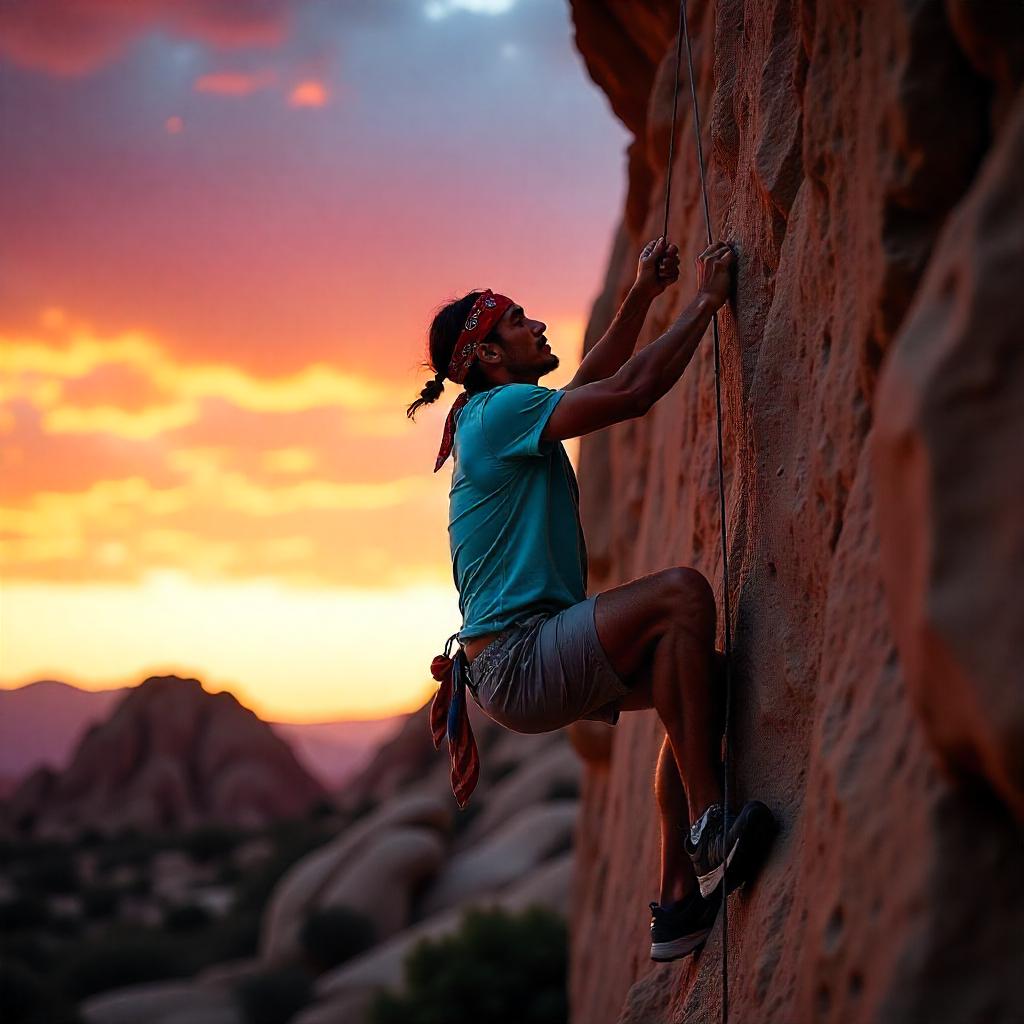Rock climbing is soaring in popularity, with over 10.1 million Americans participating in 2023, according to the Outdoor Industry Association. For beginners, the thrill of scaling a wall or crag is exhilarating, but it comes with challenges like fear of falling, quick fatigue, or confusion about technique.
Whether you’re tackling indoor bouldering or outdoor top-rope routes, mastering the right skills is key to success and enjoyment. This guide shares 10 essential rock climbing techniques to help you climb smarter, safer, and with confidence. From footwork to mental strategies, these tips will set you on the path to becoming a skilled climber.
1. Master Proper Footwork for Better Climbing Efficiency
Footwork is the foundation of effective rock climbing. Your legs are stronger than your arms, making precise foot placement critical for conserving energy and improving performance. A 2022 study in Climbing Magazine found that climbers who prioritize footwork reduce fatigue by up to 30% compared to those relying on upper body strength.
- Edging: Use the inner or outer edge of your climbing shoes for precision on small holds.
- Smearing: Press the rubber sole against the wall for friction when holds are minimal.
- Silent Climbing Drill: Practice moving your feet quietly to focus on deliberate placement, enhancing control.
- Look Down: Always scan for footholds before moving to plan your next step.
Try this at your local gym: climb a beginner route (V0-V1) focusing only on foot placement, ignoring handholds as much as possible. This builds muscle memory for efficient footwork.
2. Use Your Legs, Not Just Your Arms
A common beginner mistake is over-relying on arm strength, leading to rapid exhaustion. Your legs are your powerhouse, capable of pushing you up the wall with less effort. According to Climbing.com, leg-driven climbing can increase endurance by 40% for novices.
- Keep Arms Straight: Avoid bending elbows excessively to reduce strain on biceps.
- Push with Legs: Use your quads to drive upward, not pull with your arms.
- Hip Positioning: Shift hips toward the wall to engage leg muscles effectively.
- Exercise Tip: Incorporate squats or lunges into your routine to build leg strength.
Next time you climb, pause and check: are your legs doing the heavy lifting? Adjust your stance to prioritize leg power, and you’ll climb longer with less fatigue.
3. Learn Essential Hand Grips for Secure Holds
Hand grips are your connection to the wall, but improper use can lead to injury. The American Alpine Club reports that finger injuries account for 40% of climbing-related issues among beginners. Learning grip techniques is crucial for safety and efficiency.
- Crimps: Use fingertips on small edges, keeping thumbs over fingers for support.
- Open-Hand Grips: Relax fingers on larger holds to reduce strain.
- Pinches: Squeeze holds between thumb and fingers for stability.
- Safety Tip: Avoid over-gripping to prevent tendon strain; rest hands between climbs.
Practice grips on a hang board at the gym, starting with 10-second holds. Gradually increase duration to build strength without risking injury. Always warm up fingers to stay safe.
4. Understand Body Positioning to Climb Smarter
Proper body positioning maximizes efficiency and stability. Poor positioning, like leaning too far from the wall, causes “barn-dooring” (swinging off). Mastering this technique helps you conserve energy and tackle harder routes.
- Three-Point Contact: Always maintain three points of contact (two hands, one foot, or vice versa).
- Hips Close to Wall: Keep your center of gravity near the wall to reduce arm strain.
- Weight Shifting: Shift weight smoothly between holds to maintain balance.
- Drill: Practice “hovering” on a route, pausing to adjust your body before moving.
Climbing coaches, like those at REI’s climbing clinics, emphasize practicing on slab routes (less steep) to refine positioning. Try this to build confidence in your body’s natural balance.
5. Prioritize Climbing Safety Techniques
Safety is non-negotiable in rock climbing. A 2023 report from the Access Fund notes that proper safety practices reduce climbing accidents by 60%. For beginners, mastering safety techniques ensures a secure and enjoyable experience.
- Tie a Figure-Eight Knot: Learn this reliable knot for tying into your harness.
- Belay Properly: Understand belay commands like “on belay” and “climbing.”
- Check Gear: Always inspect your harness, rope, and carabiners before climbing.
- Gym Protocols: Follow gym rules, like staying clear of other climbers’ fall zones.
- Outdoor Tip: Be aware of rockfall risks and wear a helmet on crags.
Create a mental checklist before each climb: knot, harness, belayer, and route safety. This habit builds confidence and keeps you secure.
6. Choose the Right Gear and Use It Correctly
The right gear enhances your climbing techniques and safety. Beginners don’t need expensive equipment, but choosing quality gear is essential for performance.
- Climbing Shoes: Opt for snug, beginner-friendly shoes like the La Sportiva Tarantulace ($80–$100, per OutdoorGearLab reviews).
- Harness: Choose a comfortable, adjustable harness for top-rope climbing.
- Chalk Bag: Apply chalk lightly to improve grip without over-drying hands.
- Helmet: Essential for outdoor climbing to protect against falling rocks.
When using chalk, apply it before starting and reapply sparingly to maintain grip. Test gear at your gym’s rental counter to find what fits best before buying.
7. Practice Route Reading for Strategic Climbing
Reading a route is like solving a puzzle, helping you plan moves and conserve energy. Apps like Mountain Project show that 70% of beginners struggle with route reading, making it a critical skill to learn.
- Identify Holds: Look for handholds, footholds, and rest points before climbing.
- Plan Your Beta: Map out a sequence of moves to reach the top.
- Start Simple: Practice on V0-V1 bouldering routes or 5.6 top-rope routes.
- Gym Drill: Watch experienced climbers to learn how they interpret routes.
Spend 1–2 minutes studying a route before climbing. This small investment saves energy and boosts confidence, especially on unfamiliar walls.
8. Build Strength and Endurance with Targeted Exercises
Climbing demands strength and endurance, but you don’t need to be a bodybuilder. A 2024 Climbing Magazine study found that targeted exercises improve beginner performance by 25% within 8 weeks.
- Pull-Ups: Build upper body strength for pulling moves (2 sets of 5).
- Planks: Strengthen core for better body positioning (3 sets of 30 seconds).
- Fingerboard Training: Use a hangboard for grip strength (10-second holds, 3 reps).
- Cardio: Add 20 minutes of running to boost endurance.
Try this 15-minute routine 3 times weekly: 5 pull-ups, 30-second plank, 10 push-ups, and 10 squats. Rest 1 minute between exercises. This builds climbing-specific fitness.
9. Overcome Fear with Mental Techniques
Fear of falling or failure is common, with 80% of beginners reporting anxiety, per a Climbing.com survey. Mental techniques help you stay focused and confident.
- Visualize Success: Picture completing the route before starting.
- Breathe Deeply: Use slow, controlled breaths to calm nerves during climbs.
- Set Small Goals: Aim to reach a specific hold rather than the top.
- Practice Falling: In a gym, take controlled falls to build trust in your belayer.
Before climbing, take 30 seconds to visualize your moves and breathe deeply. This calms your mind and improves technique execution.
10. Stay Consistent with Practice and Community Involvement
Consistency and community are key to mastering rock climbing techniques. The American Alpine Club notes that climbers who join communities progress 50% faster than solo climbers.
- Climb Regularly: Aim for 2–3 sessions per week to build skills.
- Join a Gym or Club: Connect with climbers for tips and encouragement.
- Track Progress: Log routes in a notebook or app like Mountain Project.
- Attend Events: Participate in gym clinics or local crag meetups.
Find a local climbing gym or club through the Access Fund’s directory. Engaging with others keeps you motivated and exposes you to new techniques.
Conclusion
Mastering these 10 rock climbing techniques—footwork, leg use, grips, body positioning, safety, gear, route reading, strength, mental strategies, and consistency—sets you up for success as a beginner. Start small, practice regularly, and embrace the climbing community to accelerate your progress. With over 10 million climbers in the U.S. alone, you’re joining a vibrant, supportive sport. Ready to start?

